4-5 Galileo’s discoveries with a telescope strongly supported a heliocentric model
Galileo used the cutting-edge technology of the 1600s to radically transform our picture of the universe
When Dutch opticians invented the telescope during the first decade of the seventeenth century, astronomy was changed forever. The scholar who used this new tool to amass convincing evidence that the planets orbit the Sun, not Earth, was the Italian mathematician and physical scientist Galileo Galilei (Figure 4-12).
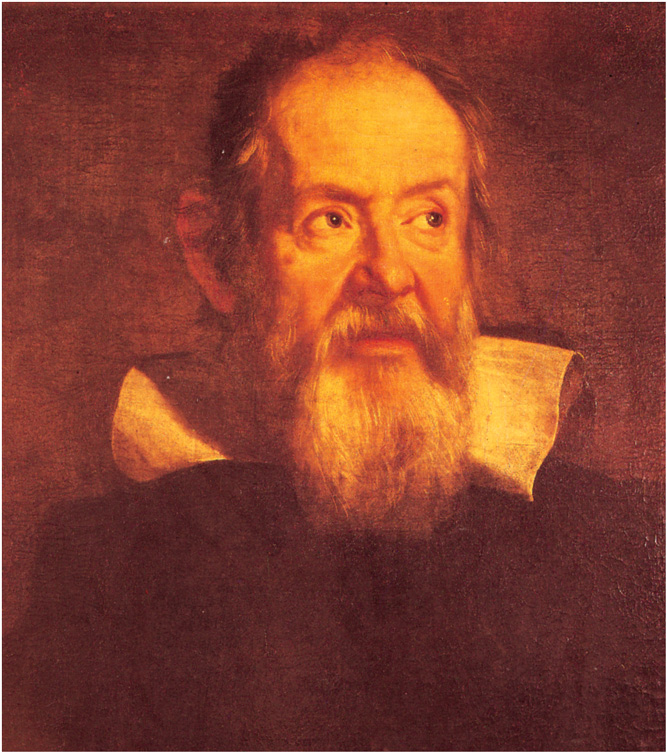
While Galileo did not invent the telescope, he was the first to point one of these new devices toward the sky and to publish his observations. Beginning in 1610, he saw sights of which no one had ever dreamed. He discovered mountains on the Moon, sunspots on the Sun, and the rings of Saturn, and he was the first to see that the Milky Way is not a featureless band of light but rather “a mass of innumerable stars.”
The Phases of Venus
One of Galileo’s most important discoveries with the telescope was that Venus exhibits phases like those of the Moon (Figure 4-13). Galileo also noticed that the apparent size of Venus as seen through his telescope was related to the planet’s phase. Venus appears small at gibbous phase and largest at crescent phase. Galileo also noted a correlation between the phases of Venus and the planet’s angular distance from the Sun.
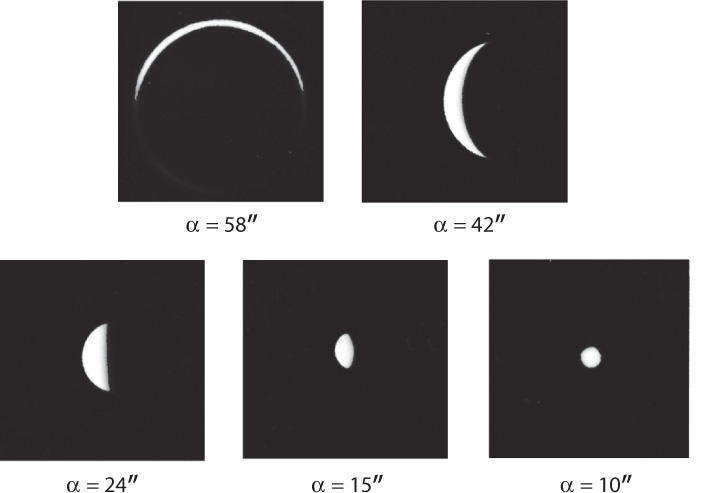
The Phases of Venus This series of photographs shows how the appearance of Venus changes as it moves along its orbit. The number below each view is the angular diameter α of the planet in arcseconds. Venus has the largest angular diameter when it is a crescent, and the smallest angular diameter when it is gibbous (nearly full).
Figure 4-14 shows that these relationships are entirely compatible with a heliocentric model in which Earth and Venus both go around the Sun. They are also completely incompatible with the Ptolemaic system, in which the Sun and Venus both orbit Earth. To explain why Venus is never seen very far from the Sun, the Ptolemaic model had to assume that the deferents of Venus and of the Sun move together in lockstep, with the epicycle of Venus centered on a straight line between Earth and the Sun (Figure 4-15). In this model, Venus was never on the opposite side of the Sun from Earth, and so it could never have shown the gibbous phases that Galileo observed.
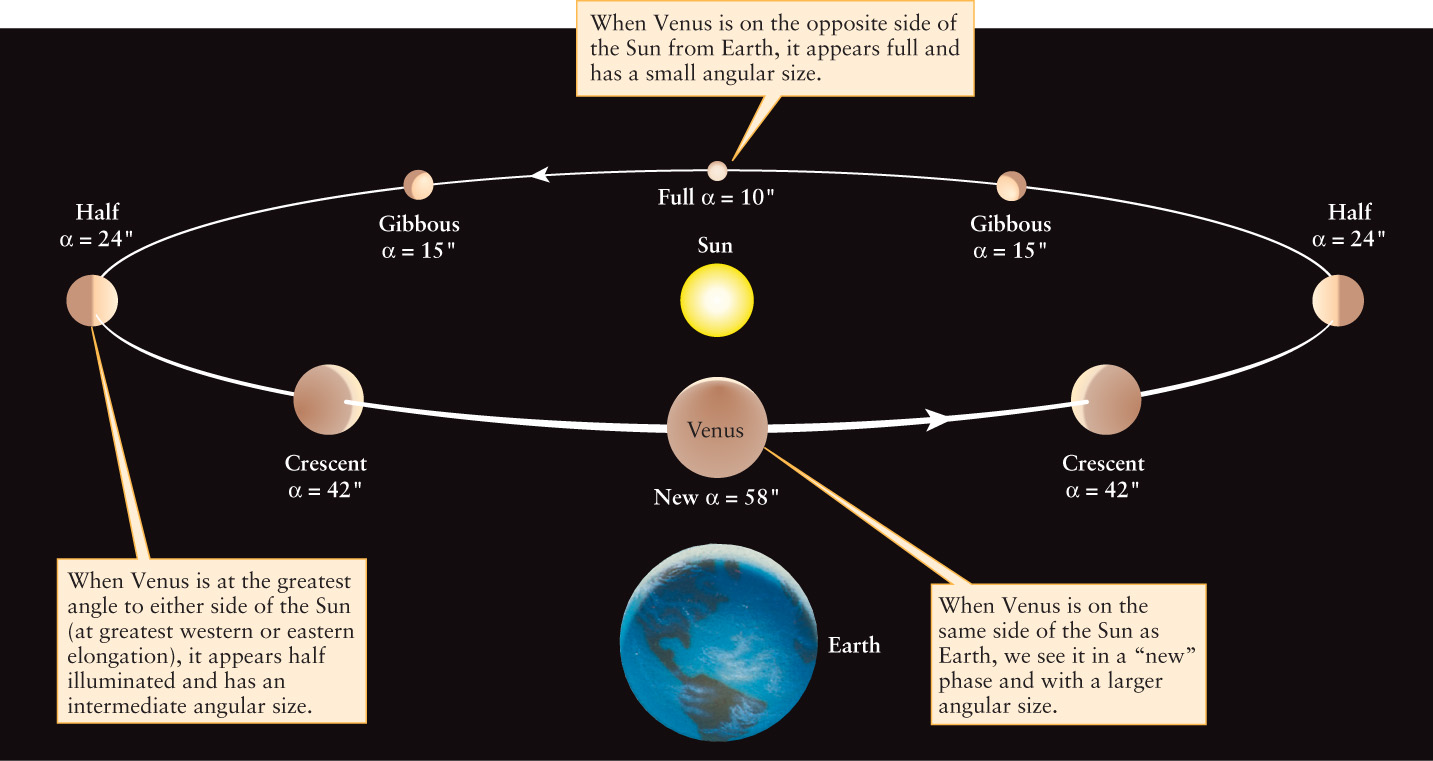
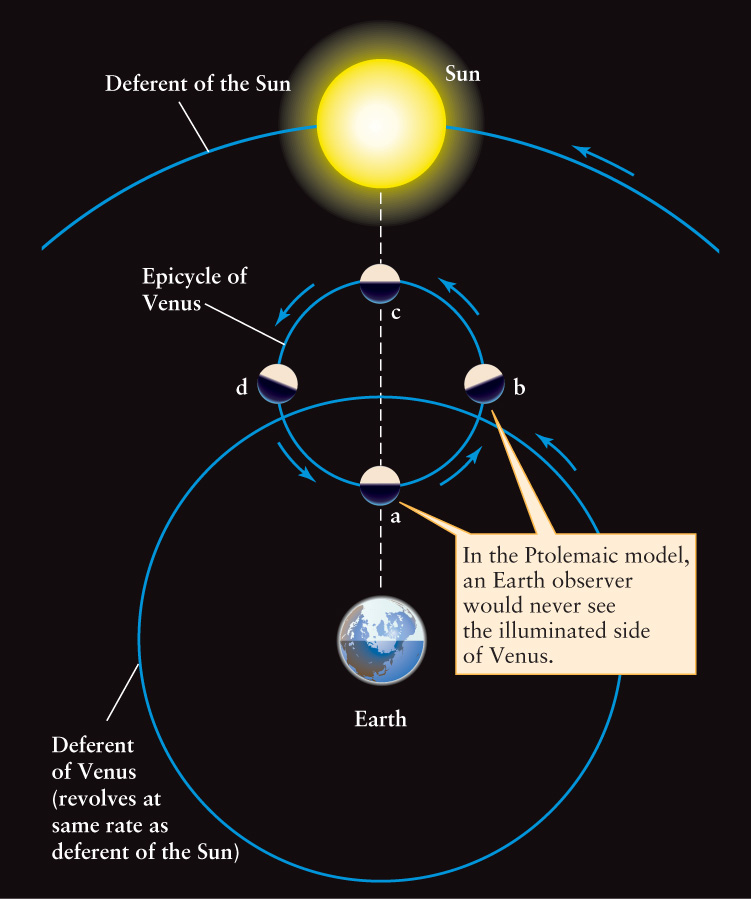
CONCEPT CHECK 4-13
Which phase will Venus be in when it is at its maximum distance from Earth?
When Venus is on the opposite side of the Sun from Earth, it will be in a full or gibbous phase. The full phase can occasionally be observed because Earth and Venus do not orbit the Sun in the same exact plane.
The Moons of Jupiter
Galileo also found more unexpected evidence supporting the ideas of Copernicus. In 1610 Galileo discovered four moons, now called the Galilean satellites, orbiting Jupiter (Figure 4-16). He realized that they were orbiting Jupiter because they appeared to move back and forth from one side of the planet to the other. Figure 4-17 shows confirming observations made by Jesuit observers in 1620. Astronomers soon realized that the larger the orbit of one of the moons around Jupiter, the slower that moon moves and the longer it takes that moon to travel around its orbit. These are the same relationships that Copernicus deduced for the motions of the planets around the Sun. Thus, the moons of Jupiter behave like a Copernican system in miniature.
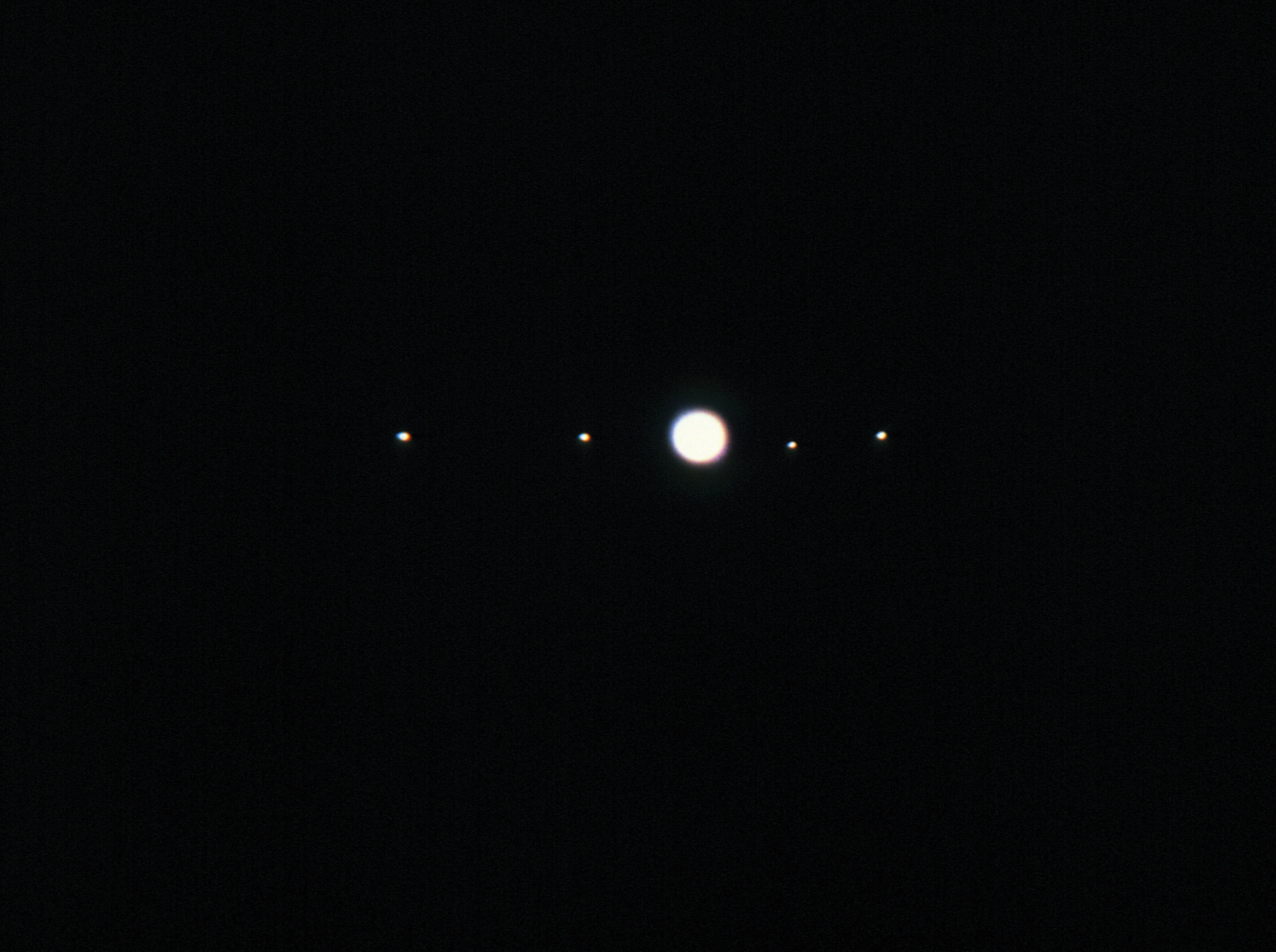
Jupiter and Its Largest Moons This photograph, taken by an amateur astronomer with a small telescope, shows the four Galilean satellites alongside an overexposed image of Jupiter. Each satellite is bright enough to be seen with the unaided eye, were it not overwhelmed by the glare of Jupiter.
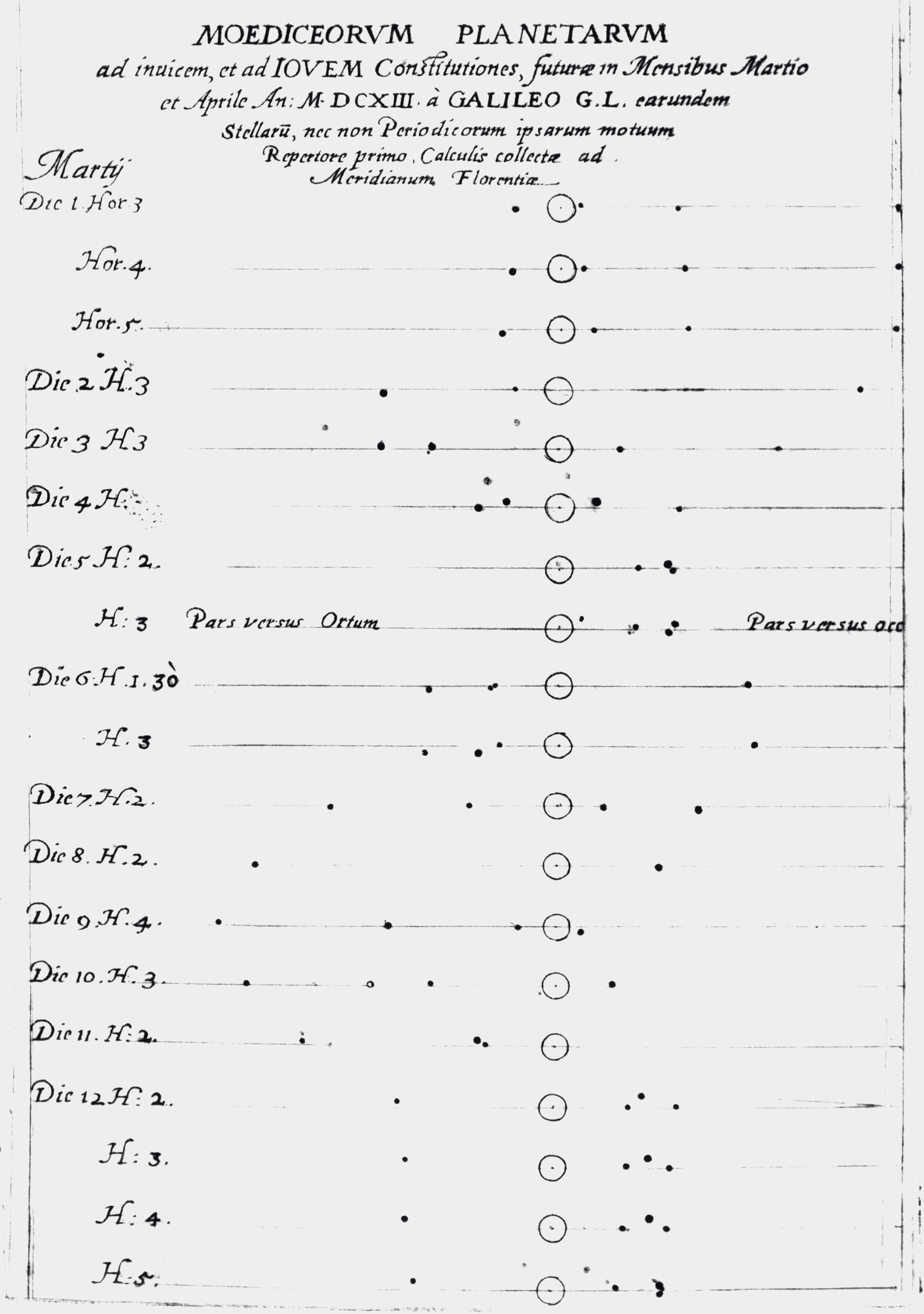
Galileo’s telescopic observations constituted the first fundamentally new astronomical data in almost 2000 years. Contradicting prevailing opinion and religious belief, his discoveries strongly suggested a heliocentric structure of the universe. The Roman Catholic Church, which was a powerful political force in Italy and whose doctrine at the time placed Earth at the center of the universe, warned Galileo not to advocate a heliocentric model. He nonetheless persisted and was sentenced to spend the last years of his life under house arrest “for vehement suspicion of heresy.” Nevertheless, there was no turning back. (The Roman Catholic Church lifted its ban against Galileo’s heliocentric ideas in the 1700s.)
While Galileo’s observations showed convincingly that the Ptolemaic model was entirely wrong and that a heliocentric model is the more nearly correct one, he was unable to provide a complete explanation of why Earth should orbit the Sun and not vice versa. The first person who was able to provide such an explanation was the Englishman Isaac Newton, born on Christmas Day of 1642, a dozen years after the death of Kepler and the same year that Galileo died. While Kepler and Galileo revolutionized our understanding of planetary motions, Newton’s contribution was far greater: He deduced the basic laws that govern all motions on Earth as well as in the heavens.
CONCEPT CHECK 4-14
Why had Jupiter’s moons not been observed prior to Galileo’s time?
Galileo was the first person to use and widely share what he learned from his telescope observations, and a telescope is necessary in order to observe Jupiter’s tiny moons.